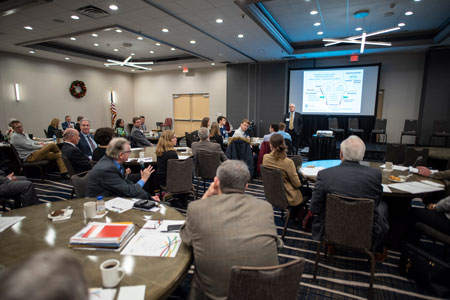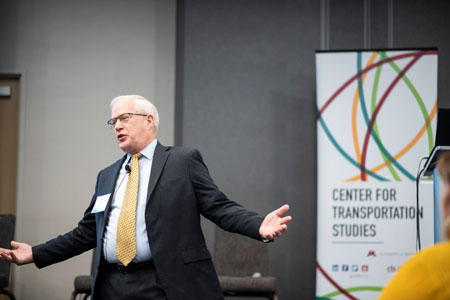Natural disaster response traditionally has been the responsibility of the public sector, but private companies have the potential to make relief efforts faster and more cost-effective. Integrating the two systems, however, requires balancing efficiency with fairness, and coordinating so many different organizations requires fluid communication.
In his keynote presentation, Jeffrey Dorko, assistant administrator for logistics at the FEMA Office of Response and Recovery, explained that the private-public relationship in disaster response still is being worked out. “America has great, almost limitless capacity to take care of citizens who just had their worst day,” he said, “but we’ve got to get what we need from where it is to where it needs to be.”
In particular, distribution of supplies is typically more of an issue during a disaster than finding them, Dorko noted, and private companies such as Costco often have this well planned out in advance. Public organizations such as FEMA, he added, need to consider these existing supply chains and refrain from getting in their way.
Rather than bringing in redundant supplies, Dorko sees FEMA efforts better directed at restoring the power, computers, and communications systems that businesses need to function. “We need to get business back to business,” he said.
So how much should the federal government aid businesses and to what degree should the public sector step aside to let the private sector manage disaster relief?
Symposium speaker Bethany Stich, director of the University of New Orleans Transportation Institute, argued that using federal aid to help businesses during a disaster is generally a waste of money and effort. “We don’t have to worry about the private sector,” she said. “They will figure it out.”
The public sector, Stich said, is critical for helping ordinary citizens. Giving private companies too much control during a disaster leaves the door open for exploitation, and the public sector is necessary for codifying the distribution of resources fairly. “The very last thing we want is for Walmart to be in charge of our disaster relief,” Stich said, “and then charge people $400 for a bottle of water.”
This does not, however, mean that there is no place for private businesses during disaster relief. Symposium panelist Emily Richards, a C.H. Robinson account manager assigned to Lowe’s, pointed out that private businesses have a very “in the trenches” viewpoint when it comes to freight shipping. In fact, this more-involved, up-close perspective can be very informative to public agencies during a disaster. “We’re actually executing the strategy and the planning,” she said.
The private sector has a lot to offer, both in terms of capacity and logistics planning. Symposium panelist Dan Murray, senior vice president at the American Transportation Research Institute, observed that small- to medium-sized fleets have untapped potential that mostly goes unused because a viable communications system has not yet been set up to connect them all.

